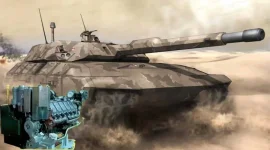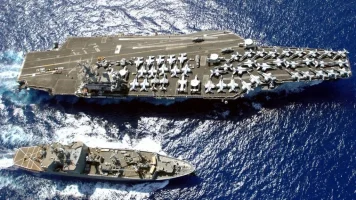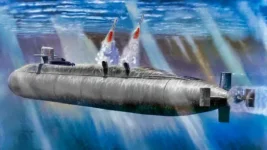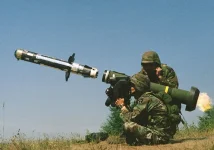- Views: 2K
- Replies: 10
In a major move to bolster its high-altitude military capabilities, India's Ministry of Defence is planning a significant power upgrade for its new light tank, Zorawar.
The project will see the prototype's current 760-horsepower engine replaced with a formidable 1,000-horsepower Cummins Advanced Combat Engine (ACE).
This enhancement is aimed at achieving a superior power-to-weight ratio of 40 hp/tonne, strategically positioning the Zorawar to effectively counter China's Type 15 light tanks deployed along the northern borders.
The development of the Zorawar light tank is a direct response to the operational gaps highlighted during the 2020 military standoff in the Galwan Valley.
The incident underscored the Indian Army's need for an agile, air-transportable, and powerful armoured platform specifically designed for the rugged, low-oxygen environment of mountainous terrain.
India's main battle tanks, the heavier T-72 and T-90, are primarily optimized for plains and desert warfare, facing mobility challenges in high-altitude regions.
Named after General Zorawar Singh Kahluria, a 19th-century commander celebrated for his successful campaigns in the Himalayas, the 25-tonne tank is a collaborative effort between the Defence Research and Development Organisation (DRDO) and private sector giant Larsen & Toubro (L&T).
Its primary mission is to provide India with a credible armoured presence in strategically sensitive areas like Ladakh.
The new engine, the Cummins ACE, represents a leap in combat vehicle technology. Developed with the U.S. Army, the 14.3-litre engine features an innovative opposed-piston, two-stroke design. This eliminates the need for a conventional valve train, resulting in a more compact and power-dense unit.
The ACE delivers a 50% increase in power density and a significant reduction in heat emission, making it ideal for the extreme cold and thin air of high altitudes where engine performance typically degrades.
Initially, Project Zorawar faced procurement hurdles. The original plan to use an 800hp German MTU engine was delayed by strict export controls, prompting a switch to the 760hp Cummins VTA903E-T760 for the prototype.
Although the German engine was eventually cleared, the Ministry of Defence opted to continue with Cummins, citing supply reliability. To further the "Make in India" initiative, the ministry has reportedly urged Cummins to establish a production or assembly facility within India.
The Zorawar is equipped with a versatile and potent weapons package. Its main armament is a Belgian-designed John Cockerill 105mm high-pressure gun, capable of firing multiple types of ammunition and anti-tank guided missiles. This is supplemented by a remote-controlled machine gun and twin launchers for anti-tank missiles.
The tank also integrates advanced systems including artificial intelligence-based situational awareness, drone integration, and an active protection system to defend against incoming projectiles.
Developmental and field trials for the tank have shown promising results. Following initial tests at L&T's facility in Hazira, the Zorawar successfully completed desert trials in September 2024 and commenced high-altitude trials in Ladakh in December 2024, demonstrating excellent mobility and firing accuracy at elevations above 4,200 meters.
The tank is scheduled for further missile firing trials in 2025, with comprehensive user trials by the Indian Army expected to last 12 to 18 months before its planned induction by 2027.
The Indian Army has approved an initial order for seven regiments of the light tank, totaling 354 units, at an estimated cost of ₹17,500 crore (approximately US$2.1 billion).
While L&T will manufacture the first batch of 59 tanks powered by the 1,000hp ACE, future production runs may feature an indigenously developed engine.
The DRDO's Combat Vehicles Research and Development Establishment (CVRDE) is working on a 700hp engine, though some experts have raised concerns that this may not meet the desired power-to-weight ratio for optimal performance in mountain warfare.




